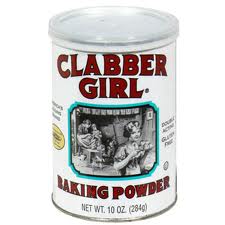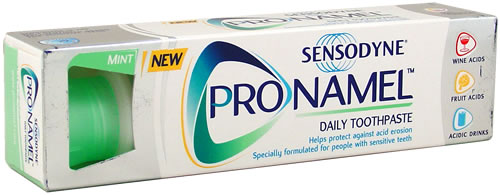History of Chernobyl.
The Chernobyl Power Complex was fueled by four RBMK-1000 nuclear reactors. The Chernobyl Power Complex was located in Ukraine, 80 miles (130 km) north of Kiev. The first and second reactors were built in 1970 and 1977, respectively, and the third and fourth reactors were constructed by 1983. The radioactive waste from the reactors was stored in an artificial tank covering 8.5 square miles (22 square km). The complex was in the middle of building two more reactors when something went horribly wrong. On April 26, 1986, a flawed Soviet design and unacceptable action and judgment of personnel who did not act according to duty under the absence of safety regulation, caused the nuclear disaster. The Chernobyl Power Complex was built during the Cold War, when there was great tension between Communist Russia and the United States after WWII, which caused a race for nuclear power technology advancement and application during a time of political and military threat as well as fear-induced propaganda.

What went wrong at Chernobyl?
Engineers at Chernobyl decided to conduct an experiment to see if the cooling pump system could continue to function using power generated by the reactor should the outside power source fail. They lowered the graphite control rods into the reactor decreasing the energy output supplying the national grid to about 20% of the usual amount. However, they miscalculated the drop in power and the nuclear reactor nearly shutdown. To compensate, the engineers frantically began to raise some of the control rods to increase the power output. However, the power levels were too low to run the pumps of the cooling system. They raised more rods, and then the power levels quickly and unexpectedly increased to dangerously high levels. Ironically, the reactor overheated and the water coolant turned to steam. The emergency stop button was pushed, however, the additional control rods displaced the remaining coolant and concentrated reactivity. At this point, fuel pellets exploded, rupturing the fuel channels. A large explosion occurred which blew off the reactor roof. Carbon monoxide burned for nine days, and a large amount of radiation was released into the atmosphere.
What are the long-term effects of Chernobyl?
Childhood thyroid cancer is probably the main long-term health effect of the Chernobyl accident. Iodine is readily concentrated in the thyroid gland. Cows initially took up radioactive iodine. The dairy animals produced milk that was consumed by children, causing thyroid cancer. Epidemiologists study the causes of disease in populations. They have debated whether the incidents of various diseases have been higher in the populations exposed to the nuclear fallout of Chernobyl compared to the general population. There appears to be a higher incidence of cataracts in children and in workers exposed to the radiation. There appears to be no change in the fertility of either men or women, however, there was an increase in congenital deformities. In addition, the trauma of the accident has caused long-term psychological problems in many people. Lichens readily absorb radioactive material from the environment. In Scandinavia, reindeer that eat lichens exhibit increased levels of radioactivity as well as the Sami people who hunt and feed on the reindeer. A 30 km radius around Chernobyl is still referred to as the “Dead Zone.” Dangerous levels of radioactivity will persist for generations.

How does a nuclear reactor work?
Nuclear power plants are made with one motive, to produce electricity in a clean reaction. The nuclear reaction at the core of a nuclear power plant produces heat, which creates steam that powers a turbine. The turbine is a generator that produces electricity. The heat to make steam is produced by the spontaneous fission of U-235 that produces fissionable products as well as neutrons. Einstein’s famous equation, E=mc2, states that mass is convertible to energy. Basically, if you add up the mass of the products of fission, they are slightly less than the mass of the original U-235. This small amount of mass, 0.1%, is converted into energy. Even though the mass is very small, it is multiplied by the square of the speed of light, which is a huge number. The energy released is in the form of gamma rays. The neutrons released collide with other atoms, creating a chain reaction. Most naturally occurring uranium is U-238 and only 0.7% is U-235. In order to make a reactor efficient, the uranium is enriched to 3-4% U-235. When a neutron hits U-235, it readily undergoes fission and splits, releasing more neutrons and energy. The chain reaction becomes exponential. Also, when U-238 collides with a neutron, it is converted to plutonium-239. When plutonium-239 collides with a neutron, it also undergoes fission and releases energy. In order to prevent the chain reaction from going out of control, graphite rods are raised and lowered into the reactor to absorb some of the neutrons created by fission. Water is pumped through the reactor in pipes, absorbing the heat produced by the nuclear reaction. This serves two important functions. First, the energy is removed from the reactor and is converted into steam and ultimately electricity, which is the purpose of the reactor. Second, this process “cools” the reactor, preventing damage and possible melting of the uranium metal.


People affected by the accident.
The commercial Chernobyl Power Plant accident has been the only circumstance of radiation fallout causing fatalities. The events of April 1986 caused the direct death of 28 power-plant workers and firemen who were either present during the initial blast or were involved in the cleanup or containment of the nuclear material. Of the thousand professionals who worked to contain the disaster, 134 people were diagnosed with Acute Radiation Syndrome (ARS). No one who was off-site of the explosion suffered from ARS. However, from the strict radiation control area that contained a population of 216,000, there was a steep increase in thyroid cancers among children that can be attributed to exposure to radioactive iodine fallout from the radiation clouds. ARS occurs when a large part of the body is exposed to an intense dose of radiation in a short period of time. The radiation must be able to penetrate through the body in order to harm internal organs and bone marrow. Immediate symptoms and signs of ARS include reddening of the skin or a rash, swelling, itching and hair-loss. Radiation poisoning can cause nausea, vomiting, loss of appetite and diarrhea. After a short time, the affected person may heal and recover or can relapse and suffer from comas or seizures. Essentially what happens is that the cells of the bone marrow are killed causing internal bleeding that can easily lead to infection.

Reaction to Chernobyl accident.
Soon after the accident, the nuclear reactor was covered in concrete and lead to serve as a temporary solution to contain the radioactive mass, allowing the plant to continue to produce electricity. By 2014, a new, more permanent structure will be in place. The major issue of the Chernobyl accident is that 200 tons of radioactive material remains in the reaction chamber, which poses a threat to the environment. Western designs and more recently constructed nuclear reactors have been made in a way that in a time of similar disaster, the radioactive material can be easily contained to prevent radioactive leaks into the atmosphere. This was a key factor in the Three-Mile Island accident in which no deaths occurred as a result of the core meltdown.


Japanese reactors could pose a threat to health and environment.
On March 11, 2011 a massive earthquake occurred near the coast of Japan. Shortly thereafter, a tsunami ravaged the coast with destruction. Unfortunately, several of Japan’s nuclear power plants are located very near this seacoast. A double power failure caused a malfunction of the cooling pumps, creating increased heat in the reaction chamber. In addition, as a result of the earthquake and subsequent tsunami, there is concern about the integrity of the containment structures. There has been controversy regarding the possibility of a disastrous meltdown of the nuclear core. Thus far, released radiation levels have been greater than those of Three-Mile Island, but much less than the disaster in Chernobyl. In the cases of Chernobyl and Three-Mile Island, the disasters were caused by human error, miscalculation, and poor planning. However, in the case of the Japanese reactors, the disaster was caused by a sudden and unexpected natural disaster. In addition, there has been criticism of the Japanese placement of a cluster of nuclear power plants right on the seacoast in an area known to be geologically vulnerable to earthquakes. In all three disasters, the concern has been loss of control of the reaction with resulting thermal meltdown, explosion, and release of deadly radiation into the environment. This problem of control is inherent in the physics and chemistry of the nuclear chain reaction.
Should we be concerned?
The economies of the world have become increasingly dependent on sources of energy to produce electricity. All of these sources of energy, including fossil fuels, hydroelectric power, wind power, solar power, and biological fuels, have hazards associated with their production and use. Nuclear power obviously is no exception. Nuclear power is produced in hundreds of plants in varying locations around the world, some of which are politically unstable. In Einstein’s equation, as stated above, the square of the speed of light (c2) is a huge number representing the enormous potential dangers of nuclear power. A nuclear catastrophe can be disastrous to a large area surrounding the nuclear plant, making the environment unusable for generations. In addition, a localized disaster can have environmental and health effects felt throughout the world. Although I see the enormous potential of nuclear power to solve many of our energy problems and needs, I am concerned about our ability, as humans, to use it safely.
Works Cited
"BBC NEWS | In Depth | Chernobyl." BBC News - Home. Web. 07 Apr. 2011. <http://news.bbc.co.uk/2/shared/spl/hi/guides/456900/456957/html/nn2page1.stm>.
"CDC Radiation Emergencies | Acute Radiation Syndrome." CDC Emergency Preparedness & Response Site. 10 May 2006. Web. 06 Apr. 2011. <http://www.bt.cdc.gov/radiation/ars.asp>.
"Celebrate Socialism Success Story with Nancy Pelosi." The People's Cube - Political Humor & Satire. Web. 06 Apr. 2011. <http://thepeoplescube.com/current-truth/celebrate-socialism-success-story-with-nancy-pelosi-t6406.html>.
"Chernobyl | Chernobyl Accident | Chernobyl Disaster." World Nuclear Association | Nuclear Power - a Sustainable Energy Resource. Web. 06 Apr. 2011. <http://www.world-nuclear.org/info/chernobyl/inf07.html>.
"Chernobyl Disaster Effects." Wikipedia, the Free Encyclopedia. Web. 06 Apr. 2011. <http://en.wikipedia.org/wiki/Chernobyl_disaster_effects>.
Rebels', Libyan. "Brave Japanese Chopper Crews Drop Water on Reactors." Politically Confused. Web. 06 Apr. 2011. <http://politically-confused.blogspot.com/2011/03/brave-japanese-chopper-crews-drop-water.html>.
Soonawala, Nash. "The Long-Term Effects of the Chernobyl Accident | EHow.com." EHow | How to Videos, Articles & More - Trusted Advice for the Curious Life | EHow.com. Web. 07 Apr. 2011. <http://www.ehow.com/info_8131701_longterm-effects-chernobyl-accident.html>.
"Three Mile Island Emergency." Three Mile Island. Dickinson College, 2007. Web. 7 Apr. 2011. <http://www.threemileisland.org/science/howitworks/index.html>.
"Worst Nuclear Accidents / Disasters in History." Top 10 Lists - Hot and Weird - SmashingLists. Web. 06 Apr. 2011. <http://www.smashinglists.com/worst-nuclear-accidents-disasters-in-history/>.
"YouTube - Video of Blast at Fukushima Nuke Plant, Radiation Leak Reported." YouTube - Broadcast Yourself. Web. 07 Apr. 2011. <http://www.youtube.com/watch?v=kjx-JlwYtyE>.






































